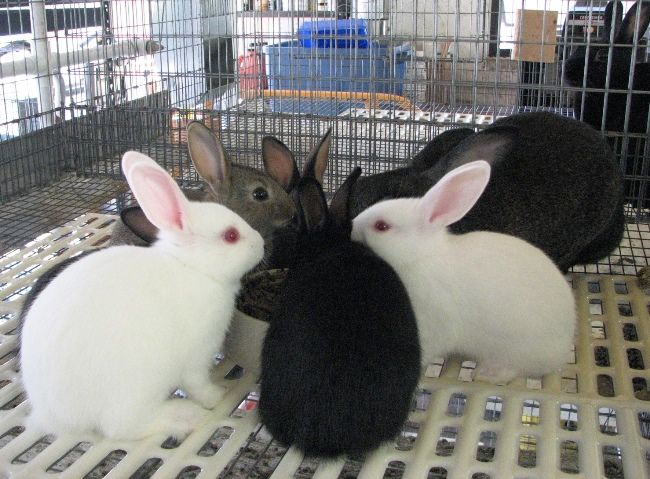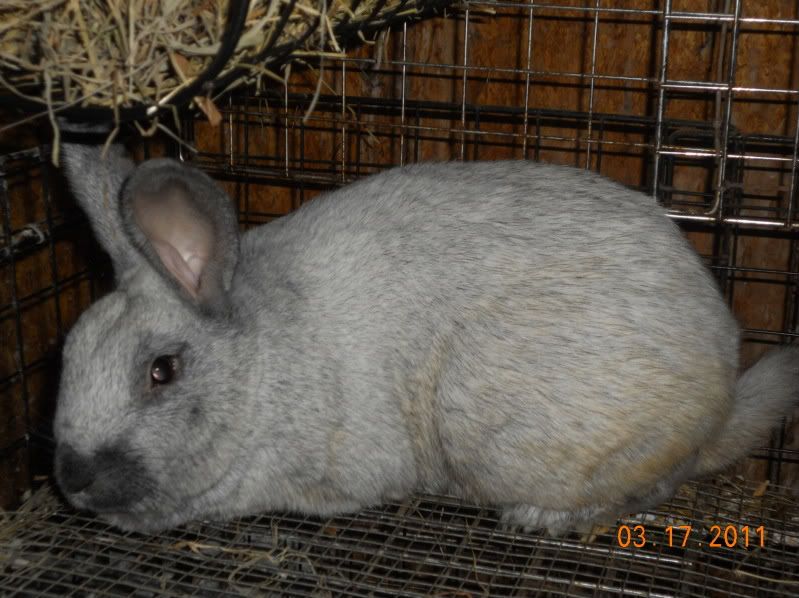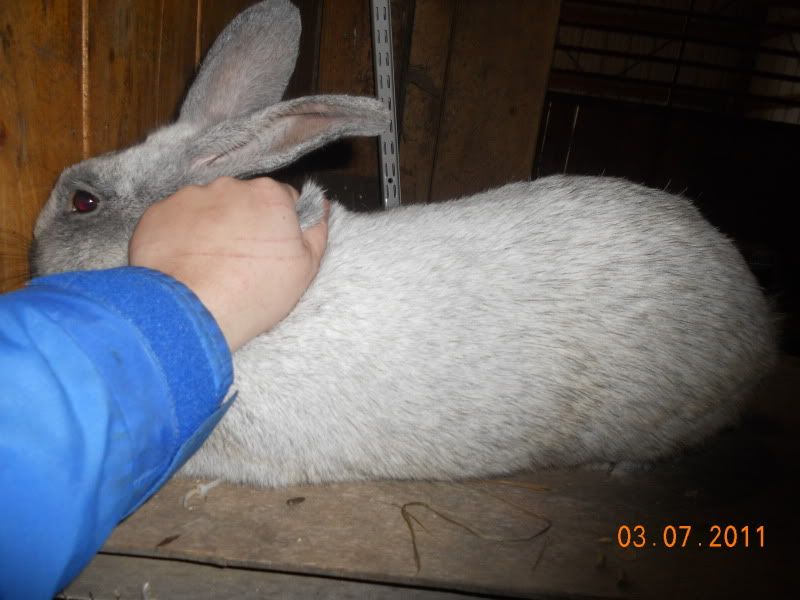I know the typical meat breeders are in the 10-12 lb range as adults, around 5 lbs for 12 week olds, dressing out in the 2.5 lb-ish range (more or less... when I tracked percentages I was getting on average around 53% with just the meat and bones, no organs or anything). I have 2 NZ, 2 Am. Chin, a Creme d' Argent, and... a dutch :lol: . DH's cousin has my original buck, a smaller mixed breed tri color. He said if I needed him I was welcome to him. I have a lady that is interested in cages and potentially a trio to get started with. That would thin my herd a LOT (although deciding which to part with is HARD - the NZ buck is a total sweetheart, and a great breeder, succeeding even when the doe is firmly planted on the cage floor... how? I have no idea BUT I love love love the salt and pepper gray of the Am Chins. decisions decisions). I would like to start working with smaller rabbits, but still for meat. I am going to do a trial litter with the tri color buck (not sure his adult weight, but he's probably around 7/8 lbs maybe?) and the blue harlequin dutch doe. I can't wait to see what colors/markings might come from them! Then see what their dress out percentages are. If I can get at least 50% I think it would be worth it enough.
Just curious if anyone else has smaller rabbits for meat specifically. I see a lot of advantages - easier to handle, decreased feed consumption, more room per rabbit in the hutch, smaller poop, etc. Disadvantage is mainly that I would obviously need more rabbits per meal to feed my family of 6, making it a bit more tedious when pulling meat off of the bones.
Just curious if anyone else has smaller rabbits for meat specifically. I see a lot of advantages - easier to handle, decreased feed consumption, more room per rabbit in the hutch, smaller poop, etc. Disadvantage is mainly that I would obviously need more rabbits per meal to feed my family of 6, making it a bit more tedious when pulling meat off of the bones.









